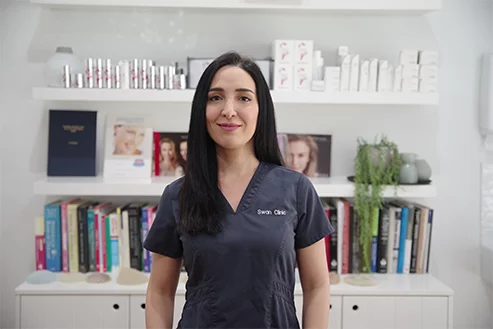FAT GRAFTING
Fat transfer also known as fat grafting is a natural technique using your own cells.
It is a powerful tool to replace areas where fat is needed. Fat transfer has a dual benefit, both improving the donor site, and transplanting the fat to where it is needed. Fat survives long term, studies show a retention rate long term of 50-80%. The most popular areas for fat augmentation are the cheek areas, the nasolabial folds and marionette lines. These fill out hollowing and replace fat pockets that have been depleted. Rather than cheek implants, which may become infected or age unnaturally, fat replaces what is lost where it is needed.
DESIRED RESULTS: Fat transfer has a dual benefit, both improving the donor site, and transplanting the fat to where it is needed.
ALSO KNOWN AS: Fat graftinG, Fat transfer cosmetic surgery, Facial fat transfer
Fat can be harvested from the donor site of your choice, these include:
- Lower abdomen or tummy area
- Upper abdomen or tummy area
- The flank area or the love handles
- Inside of thighs
- Inside of thighs
- Outside of thighs
Fat can be transferred to:
- The temples
- The lower eyelid trough area
- The cheeks
- The nasolabials
- The marionettes
- The Chin
- The bridge of nose
HOW IS FAT TRANSFER DONE?
The fat is removed using a thin cannula using a 2mm incision. The fat is gently suctioned out without using heat, ultrasound or laser as these can damage the delicate cells. The fat is then processed to allow maximum cell survival and maximal graft take The fat is then infused as microribbons to the areas where you need it the most. These microribbons distributed as a net improves the contact of each fat cell to a source of blood supply. The fat “takes” by it establishing a blood supply through a process of blood vessel ingrowth and integration. This allows the fat to survive long term.
The benefits of fat transfer include:
- It is natural, using your own tissues
- It includes plasma (PRP)
- It includes stem cells which may repopulate the area with new cells
- Is in plentiful supply once harvested
- Has a retention rate long term of 50-80%
- Improved appearance of donor site
- It can be repeated if needed
Recovery
Post op you will need to rest and follow your post op instructions. You can drive after 2 days if your comfortable to do so. You may need a compression garment on your donor site for 2-4 weeks to reduce swelling.
You can return to work in 1-2 weeks. Return to exercise in 4-6 weeks.

